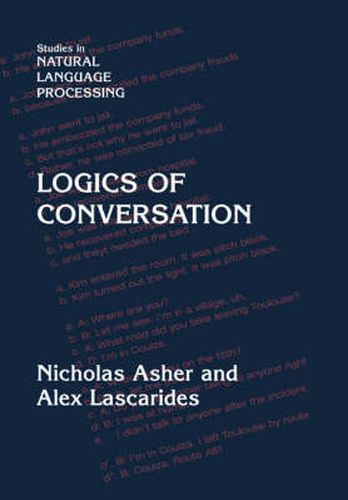Readings Newsletter
Become a Readings Member to make your shopping experience even easier.
Sign in or sign up for free!
You’re not far away from qualifying for FREE standard shipping within Australia
You’ve qualified for FREE standard shipping within Australia
The cart is loading…






People often mean more than they say. Grammar on its own is typically insufficient for determining the full meaning of an utterance; the assumption that the discourse is coherent or ‘makes sense’ has an important role to play in determining meaning as well. Logics of Conversation presents a dynamic semantic framework called Segmented Discourse Representation Theory, or SDRT, where this interaction between discourse coherence and discourse interpretation is explored in a logically precise manner. Combining ideas from dynamic semantics, commonsense reasoning and speech act theory, SDRT uses its analysis of rhetorical relations to capture intuitively compelling implicatures. It provides a computable method for constructing these logical forms and is one of the most formally precise and linguistically grounded accounts of discourse interpretation currently available. The book will be of interest to researchers and students in linguistics and in philosophy of language.
$9.00 standard shipping within Australia
FREE standard shipping within Australia for orders over $100.00
Express & International shipping calculated at checkout
People often mean more than they say. Grammar on its own is typically insufficient for determining the full meaning of an utterance; the assumption that the discourse is coherent or ‘makes sense’ has an important role to play in determining meaning as well. Logics of Conversation presents a dynamic semantic framework called Segmented Discourse Representation Theory, or SDRT, where this interaction between discourse coherence and discourse interpretation is explored in a logically precise manner. Combining ideas from dynamic semantics, commonsense reasoning and speech act theory, SDRT uses its analysis of rhetorical relations to capture intuitively compelling implicatures. It provides a computable method for constructing these logical forms and is one of the most formally precise and linguistically grounded accounts of discourse interpretation currently available. The book will be of interest to researchers and students in linguistics and in philosophy of language.